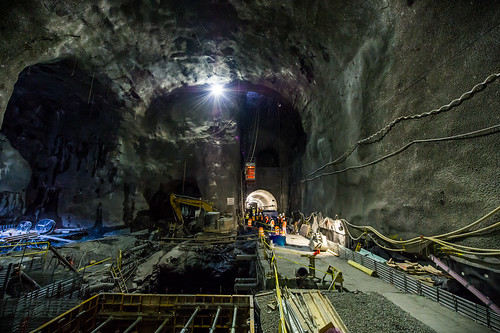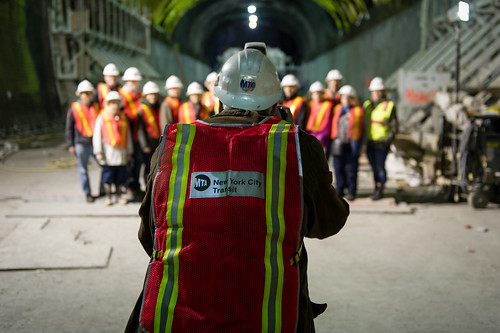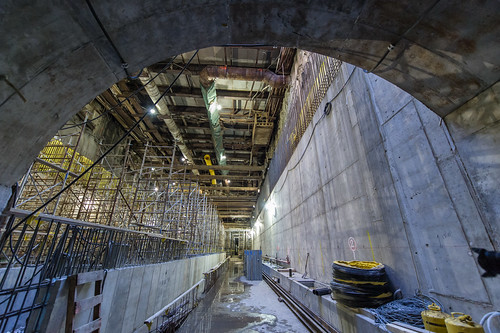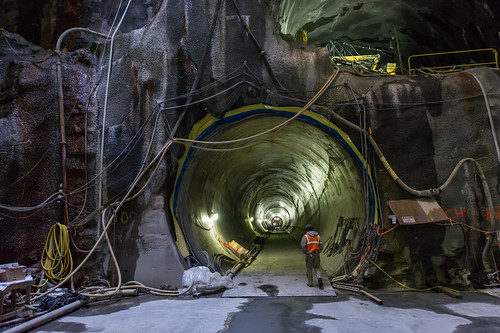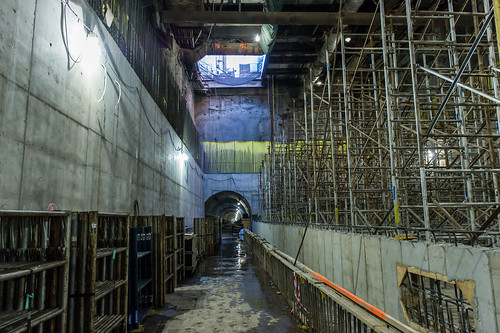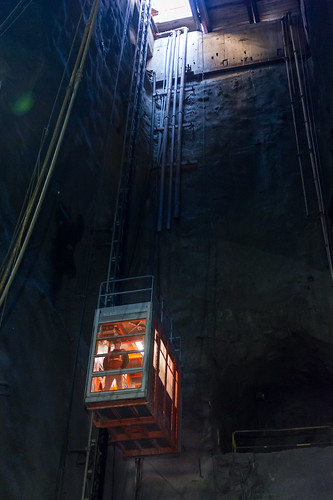The first stop on the tour was the glass-floored walkway located at the very top the terminal. Several small open windows gave me this grand view of the terminal's main concourse, including the famous terminal clock located above the information booth at center. Fujifilm X-Pro2 with a Fujinon 16-55mm lens. 1/60 @ f2.8, ISO 2000.
I recently had the opportunity to take a "hard hat" tour of Grand Central Terminal (not station) while in New York City for the annual Photo Plus Expo. I am constantly amazed at the opportunities I get because of my camera.
And also because of the people I know and have met because of the camera, which is how I found myself on this rare tour of the busiest train station in the country. My good friend is the photographer for the Metropolitan Transportation Authority and he set this up for me, something that I've been looking forward to since he first introduced me to Metro-North Railroad's treasure of a tour guide Dan Brucker several years ago.
This abandoned railcar located on track 61 was used by FDR during his presidency to transport him, already seated in his Pierce Arrow limousine, to a private station located under the Waldorf Astoria hotel. Fujifilm X-Pro2 with a Fujinon 16-55mm lens. 1/15 @ f2.8, ISO 6400.
To be clear, I wasn't the only person on this tour and these photos are not exclusive, but it is far from common to have this kind of access and I took the opportunity seriously. That started with renting a Fujinon XF 16-55mm f2.8 R LM WR lens from Borrowlenses.com. I knew that the three and half hour tour would be fast paced and I didn't want to change lenses. I also don't own anything longer than the Fujinon XF 35mm f2 R WR, so a zoom made perfect sense, especially one that is f2.8 throughout.
And it is quite the lens. It had a solid feel, was tack sharp and handled the low light great. However, it was also very big and for me, that size becomes an issue when paired with my X-Pro2. This is similar to the Fujinon XF 16mm f1.4 R WR, another solid, tack sharp lens, but big. What I really love about the X-Pro2 is that people hardly take notice that I'm carrying a pro camera. Adding a big lens on the front, no matter how great it is, takes away from that myth.
The secret sub-basement known as M42 is 13 stories below Manhatten, doesn't exist on any plans and still houses massive electrical converters dating from WWII. Like the railcar photo above, monochrome just made sense. Fujifilm X-Pro2 with a Fujinon 16-55mm lens. 1/15 @ f2.8, ISO 1250.
Of course, if stealth on the street isn't an issue, then you will love this lens. And I really do like this lens and considering that I also use my X-Pro2 for all kinds of photography, it may still find it's way into my bag. But before I do that, I'm going to give the Fujinon XF 18-55mm f2.8-4 R LM OIS, a lens I first used paired with the X-T1 during seven days of shooting in the San Francisco area, another try.
You may also notice that all three photos I chose to include in this post were taken with a focal length of 16mm. So did I really need the zoom? Purely coincidental, I assure you that I did take some photos at other focal lengths.
If you find yourself in New York, take a few hours and visit Grand Central Terminal. Even if you can't get a behind-the-scenes tour, there is plenty to explore and photograph.











